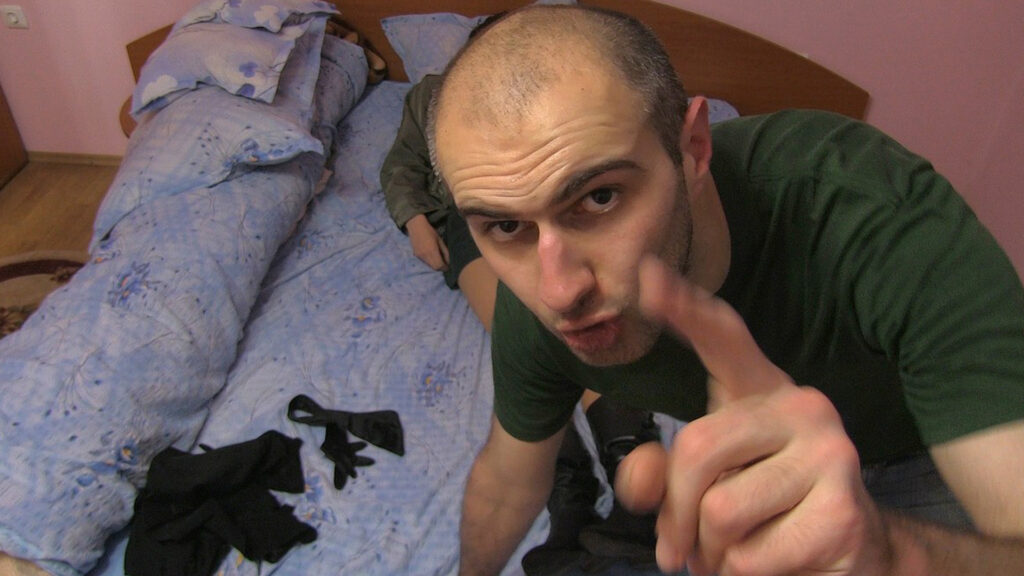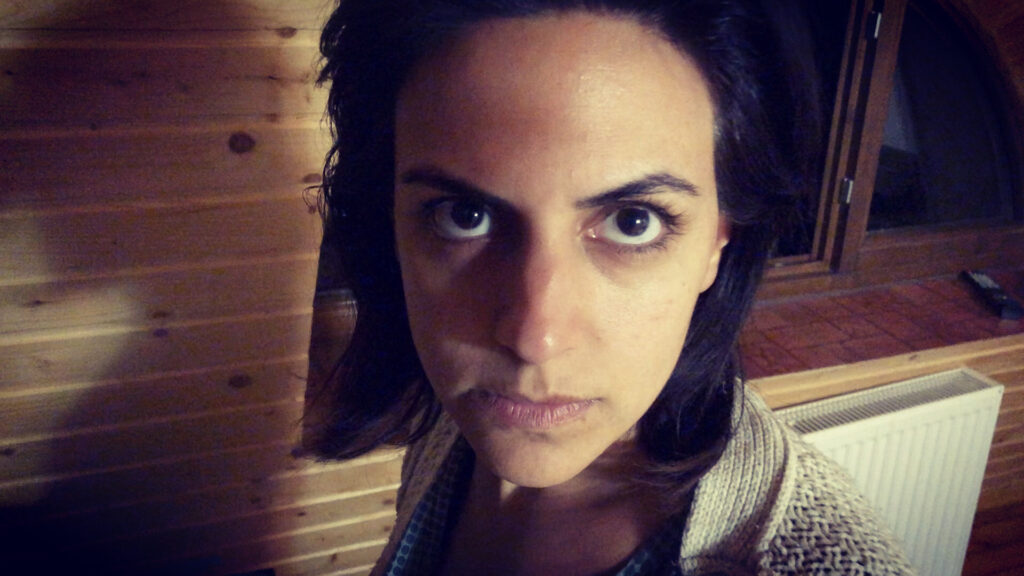Romanian actor and director, Adrian Țofei wrote, directed and starred in the controversial horror foundfootage “Be my cat: A film for Anne”, whose plot revolves around a filmmaker that wants to direct a film starring Anne Hathaway that, after a long preparation, will perform role-playing simulations with local substitutes of the Hollywood star, in order to show her his direction abilities.
We, from Reimagem, had a good time with Țofei, talking about cinema, his career and future projects.

RR: Metalanguage, inside arts in general, is a way to explore possibilities of renewal, updating or reconstruction of its own language. In your creative process, what is the metalanguage’s importance?
AȚ: Great question – do you know that I never really had a deep discussion with myself to find the roots of my love for meta? I think it has to do with educating audiences in an indirect way, without being preachy. I always loved to expose my creative process, to teach and inspire people about the art of filmmaking and acting, to make them engaged in a way beyond them being just audiences. I think I see them as potential future filmmakers or actors. Filmmaking or acting is not thought in schools or high schools as a compulsory subject like math or physics. So, when someone has talent in filmmaking or acting – how can they become aware of that talent? Movies show you the final product, they don’t show you the creative process. Except for meta films. They can show the process of their own making and on top of entertaining audiences, can also inspire them to venture into a creative path in life and get in touch with their potential talents.
RR: If we sum up the synopsis of Be My Cat: A Film for Anne, your first feature film, we could say that it is a pseudo-documentary that aims to propose the making of another film, starring Anne Hathaway. It is a film that exists and is registered in those images, but which reflects the desire to make another film that only exists in the protagonist’s imagination. How do movies, generally speaking, influence your way of seeing, thinking and producing cinema?
AȚ: Honestly there are so so so many ways that movies and acting performances influenced me that I literally can’t synthesize this in a couple of phrases. I’d have to write a novel, haha. I used to have a list of top 250 films that impressed and influenced me the most on my website, and was planning to detail the way every film influenced me, but when I realised that work would take forever, I deleted everything and just kept 100 films in the list without any explanation, haha. I went though in details back in 2012 in my Found Footage Manifesto.
RR: Since the release of Be My Cat, has Anne Hathaway given some kind of response to your movie?
AȚ: No, no sign from Anne Hathaway yet. My guess is that she at least heard about the movie, or maybe even watched the trailer, but that’s just a guess. Who knows. I used to dream that she’d be asked about Be My Cat by some late night show host, but that never happened. And herself saying something by her own initiative – I don’t see that happening anytime soon. I am sure at some point I’ll learn one way or another her opinion about the film, but that might not be public – just learning via word of mouth from industry people.
RR: In your “Found Footage Manifesto”, you also address the issue of realism, but in a more self-conscious way due to the explicit presence of the camera. In your opinion, what is the relationship between found footage and the idea of realism in cinema?
AȚ: Found footage and the Dogme 95 movement came as close as possible to the ultimate cinematic realism in terms or fictional narrative. I’d say found footage even more than Dogme 95 because in Dogme 95 you can still ask yourself: how come I see everything I see? obviously someone filmed everything and that someone is not part of the reality depicted in the film, therefore what I see is staged, is not real. Found footage removes even this last element that reminds audiences that what they see is not real by justifying the existence of the camera and the person filming within the reality depicted in the film.

RR: What can you already tell us about your next movie?
AȚ: We shot We Put the World to Sleep over a period of 5 years in over 12 cities, villages and remote locations in Romania, Turkey and Ukraine. My filmmaking method usually consists of working for months (years in this case) on an alternative psychological reality for the actors including myself, partially living in character, so that when we start improvising, I mainly need to record the unfolding events and to make sure the improvisation goes in the right direction. There is usually no detailed script, only plot points. I shoot tens of hours of footage guerrilla style (about 200 hours for We Put the World to Sleep), and then I watch the footage like a documentary filmmaker would and I create the details of the story in post-production during the editing process. But I think this time I might have went too far. If Be My Cat was 50% planned and 50% improvised, We Put the World to Sleep was only 25% planned and 75% improvised. I pushed to extremes the limits of improvisational filmmaking. Sometimes it worked, other times it didn’t. One thing is sure though, it’s going to be damn crazy!
_
(Translated by Letícia Santos de Oliveira)
